Top 5 SEO Recommendations for Your Home Page
Your home page is your store front – it is the first interaction you have with your audience, and the most straightforward opportunity to tell them about who you are and how you can help.
Unfortunately, none of that matters if no one visits. As you design and redesign your website, it’s crucial to consider whether or not organic search visibility is a long-term priority. If it is, taking steps early in the design process can maximize your chance of a high ranking in organic search results.
These steps range from framework and design to keyword research and copywriting. When changing your home page, consider these top five home page SEO recommendations.
- Enough Text
Sliders, widgets, and other small text areas can be beautiful from a design standpoint, but they don’t offer much in the way of SEO. Search engines need text to understand the purpose of a web page, so design elements that reduce the amount of text on page make it difficult to achieve a high organic search ranking.
To avoid confusing search engines, we recommend having at least one paragraph on the home page that describes your company and its offerings – that way the home page isn’t penalized for having thin content.
- Text in Images
Scrolling image sliders have long been used across website home pages, but they aren’t great for SEO. Some even argue that such sliders are ineffective from a design standpoint, but that debate is beyond the scope of this article.
The bottom line is that search engines cannot read text in images. Any text that you have in images is not contributing to your organic search ranking. If, for whatever reason, there are search terms that you would rather not rank for, by all means include them in image text. Otherwise, keeping text out of images (or linked PDFs) will give search engines more information to work with.
If you would like to use sliders on your website, make sure the text is also included as HTML.
- Keyword Research
Once you’ve established a body of text that can be crawled by search engines, you can optimize that text with keyword research.
As with every other page on the site, search engines look for one primary keyword phrase to understand the subject of your home page. Perform keyword research using Google AdWords and an SEO tool like Moz to discover which words and phrases have high search volumes with low ranking difficulties.
Once you’ve identified your target keyword, use it as a meta title, heading, and throughout the page’s content to ensure that search engines know what you’re talking about.
- “Fresh” Content
Search engines reward websites that consistently provide new, interesting information. Fortunately, providing new, interesting, and useful information is also a great way to stay in touch with and provide value to your audience.
How can engines know if a website has new and interesting content? If a search engine finds new information during its regular crawls, it can tell that the website is producing more content. Indicators like dwell time are thought to indicate to search engines whether or not website visitors find content useful or interesting – and the debate whether bounce rates could serve as a ranking factor is still raging.
- Mobile Friendly/Responsive
Widespread mobile device usage is here to stay. Having a mobile friendly home page no longer puts you ahead of the game – it’s par for the course.
Search engines have followed the trends and incorporated mobile compatibility into their ranking algorithms. In addition to improving user experience, websites that load well across all devices do better in organic search rankings than those that do not.
Mobile responsiveness can attract more visitors through improved rankings and keep visitors on your site through improved user experience – perpetuating the relationship between organic search rankings and visitor experience.
Website home pages are about more than just design. Incorporating substantial amounts of fresh, interesting, keyword-rich text on mobile friendly websites can attract more visitors to your home page – and your company.
